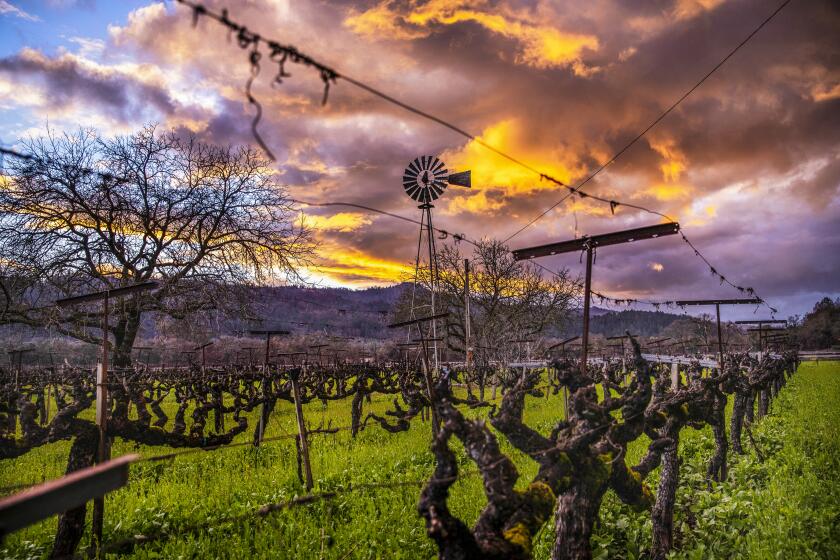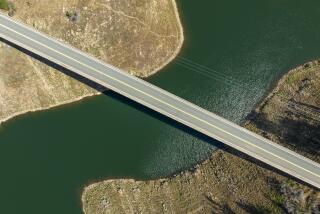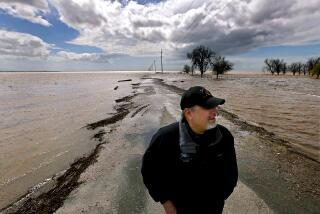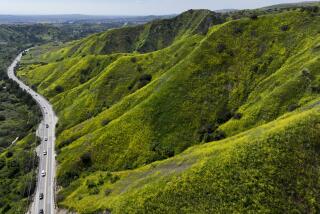Editorial: There is no drought
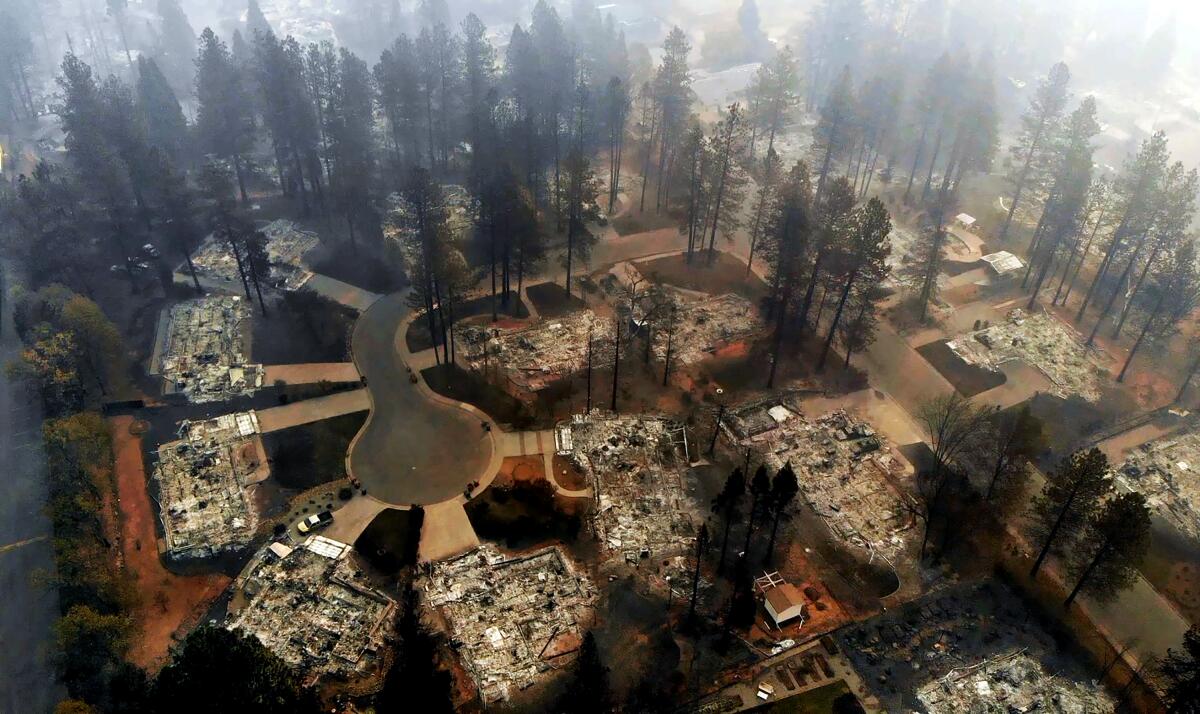
If ‘drought’ means a period of dry years followed by a return to the norm, California is not in drought. The current climate is the norm.
- Share via
Gov. Gavin Newsom declared a drought emergency last month in Sonoma and Mendocino counties because of severe drop-offs in the winter rains that once had been counted on to fill reservoirs in the Russian River watershed, north of the San Francisco Bay Area. Like most other California reservoirs, those human-made lakes were built in the 20th century, an unusually wet period when compared with more than a thousand years of climate records reconstructed from studies of ancient tree rings and geological evidence.
The two formerly verdant counties were among the state’s hardest-hit regions in last year’s record-setting wildfire season that included the August Complex fires, which erupted not just because of years of intensifying summer heat drying out the trees and the ground beneath them but also, ironically, because of fierce summer storms and accompanying lightning. The August Complex followed the 2019 Kincade fire, which burned much of Sonoma County, and the 2018 Mendocino Complex fires, which at the time made up the state’s largest recorded wildfire incident. Before that was the 2017 Tubbs fire, which destroyed significant portions of Santa Rosa — following California’s wettest year on record. So much rain fell that winter that the ground could not absorb it all, yet the summer was so hot that it desiccated the forests.
Gov. Newsom has declared a drought emergency in Mendocino and Sonoma counties but said he was not prepared to issue statewide water-use restrictions.
Average out the sporadic flood years with the succession of dry ones and the numbers will tell you that California is getting as much precipitation as ever. There is no drought — not if drought means a decrease in total rainfall.
But we legislated and plumbed this state for a different climate pattern, when annual winter rains reliably fell on Sonoma and points north, and a full Sierra snowpack reliably melted through the spring and summer to feed streams and irrigate orchards and farm fields. That era is long gone. The snowpack comes unpredictably, because a warmer climate means water that formerly stayed in the mountains as snow through the summer now melts sooner, or falls as rain and rushes westward to the sea in the winter, when we need it the least. A quick look at any satellite photo from a heavy-snow year reveals that no number of new dams could ever replace the snowpack’s formerly reliable volume.
More 20th century infrastructure, lawmaking and emergency declarations won’t get us through this drought — because this is no drought.
Droughts come for a year, or two, or even 10 — and then end. Seasonal crops are fallowed, lawns are ripped out, car washing stops — and then life, lawns, crops and car washing all return to the way they were before.
That’s not what we’ve got. Drought does not erase the coastal fog that once was commonplace in the Bay Area, or suck all moisture from the ground even after flood winters the way it has done not just in Sonoma and Mendocino but also in Topanga, Malibu and the Santa Susana Mountains, as was the case before 2018’s Woolsey fire. Droughts are deviations from the norm. What we have now is no deviation. It is the norm itself. Our climate has changed. As much water falls from the sky as before, but at different times and in different ways.
A drought declaration suspends existing rules governing storage, transport and quality of water, but the details matter. In Sonoma and Mendocino, Newsom’s declaration means more water can be kept in reservoirs instead of being delivered to farmers who grow wine grapes and other crops. But Central Valley lawmakers are hopping mad that the governor didn’t declare drought statewide, because they want the rules bent to allow the opposite — more water from reservoirs to grow their crops, less for urban residents and migrating fish.
They argue that an emergency order will help with “this challenging, but temporary, situation,” and that in the meantime, some of California’s unexpected billions in revenue should be used to keep agricultural operations going through the “drought.”
But no — this is no drought, there is no “temporary” situation, and one-time money should not be spent to keep operations at unsustainable former levels. Money spent on programs or infrastructure that does not reflect new climate patterns or help water users adapt to them is money wasted.
More agricultural acreage should be fallowed, and less water diverted from dried-out rivers and streams for unsustainable vineyards and orchards. Floodplains should be restored, so that in wet winters the excess water that once might have been frozen on mountainsides but now rushes downhill as flash floods can gather, settle and seep into the ground over the dry springs, summers and falls, and in the meantime sustain birds and spawning fish whose ancient marshes and wetlands we have drained. Urban areas, once they use their water, must purify it and use it again, because imports from distant places will be less certain, and it is foolish to keep flushing all that useful water away.
Yet we still need linkages among California’s many regions. That’s one lesson from Sonoma and Mendocino, which have no water connections to wetter areas, and Los Angeles, which does. Some transfers must be actual water, but many can be on paper — transfers of contractual water rights, for example.
There is no drought. That phrase is sometimes used to deny the epic and obvious change in our climate patterns, but that’s all wrong. Just as there is no temporary drought in the Sahara, where heat and dryness punctuated by flash flooding is the norm, there is no temporary drought in California. The years of steady and predictable water flow are over, and there is no sign of them coming back in our lifetimes. This is it. We have to build, and grow, and legislate, and consume for the world as it is, not as we may remember it.
More to Read
A cure for the common opinion
Get thought-provoking perspectives with our weekly newsletter.
You may occasionally receive promotional content from the Los Angeles Times.
